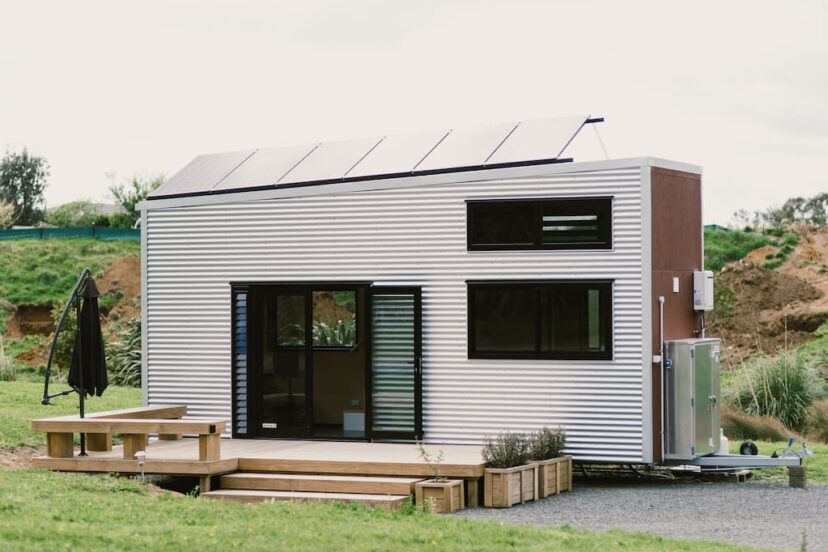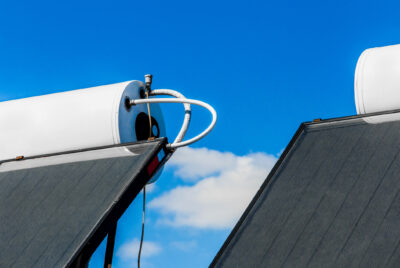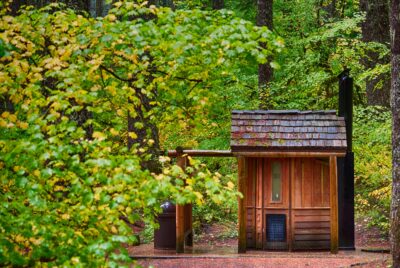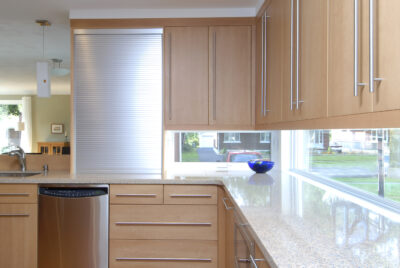Off-Grid Solar Systems vs. Grid-Tied: Which is Right for Your Tiny House?
In the world of solar energy, two main options stand out for powering your small house: off-grid solar systems and grid-tied solar systems. Each comes with its own set of benefits and limitations, making the choice between them a crucial decision for small house owners looking to harness the power of the sun. In this comprehensive guide, we’ll explore the differences between off-grid and grid-tied solar systems, weigh their pros and cons, and provide valuable insights to help you determine which option is best suited for your unique needs.
Introduction: Understanding Off-Grid and Grid-Tied Solar Systems
Before diving into the comparison, let’s first understand what off-grid and grid-tied solar systems entail.
Off-grid solar systems are designed to operate independently of the electrical grid. These systems typically include solar panels, batteries for energy storage, charge controllers, and inverters. Off-grid setups are ideal for remote locations or areas where connecting to the grid is not feasible or cost-effective. They offer homeowners complete energy independence, allowing them to generate and store their own electricity.
On the other hand, grid-tied solar systems are connected to the electrical grid. These systems consist of solar panels, inverters, and sometimes, a metering system. Grid-tied setups allow homeowners to generate their own electricity from solar power while remaining connected to the grid. Excess energy produced by the solar panels can be fed back into the grid, often resulting in credits or compensation from the utility company.
Pros and Cons of Off-Grid Solar Systems for Tiny Houses
Pros:
- Independence: Off-grid solar systems offer homeowners the freedom to generate their own electricity without relying on the grid.
- Reliability: In remote areas or during grid outages, off-grid systems provide a reliable source of power.
- Environmental Benefits: By generating electricity from renewable energy sources, off-grid systems reduce reliance on fossil fuels and lower carbon emissions.
Cons:
- Cost: The initial investment for off-grid solar systems, including batteries for energy storage, can be higher compared to grid-tied setups.
- Limited Energy Storage: The capacity of batteries in off-grid systems may limit the amount of energy that can be stored for use during periods of low sunlight.
- Maintenance: Off-grid systems require regular maintenance, including monitoring battery levels and ensuring proper functioning of all components.
Pros and Cons of Grid-Tied Solar Systems
Pros:
- Access to Grid Backup: Grid-tied systems provide access to backup power from the grid during periods of low solar production or high energy demand.
- Net Metering: Homeowners with grid-tied systems can benefit from net metering programs, where excess energy fed back into the grid earns credits or compensation.
- Lower Initial Costs: Grid-tied systems typically have lower upfront costs compared to off-grid setups since they do not require expensive battery storage.
Cons:
- Dependency on the Grid: Grid-tied systems rely on the stability and availability of the grid, making homeowners vulnerable to grid outages or disruptions.
- Lack of Independence: Unlike off-grid setups, grid-tied systems do not offer complete energy independence, as homeowners still rely on the grid for backup power.
- Regulatory Constraints: Some regions may have regulations or restrictions on grid-tied solar systems, limiting their potential benefits for homeowners.
Factors to Consider When Choosing Between Off-Grid and Grid-Tied Solar Systems
When deciding between off-grid and grid-tied solar systems for your small house, several factors should be taken into account:
Location: Consider your location and access to the grid. In remote areas where grid connection is difficult or expensive, off-grid systems may be more suitable.
Energy Needs: Evaluate your energy needs and consumption patterns. Off-grid systems are better suited for homeowners who prioritize energy independence and are willing to invest in battery storage.
Budget: Assess your budget and financial resources. Grid-tied systems generally have lower upfront costs, making them more accessible for homeowners on a tight budget.
Reliability: Think about the reliability of the grid in your area. If grid outages are frequent or prolonged, an off-grid system may offer more peace of mind.
Environmental Impact: Consider the environmental impact of your energy choices. Off-grid systems offer greater environmental benefits by reducing reliance on fossil fuels and lowering carbon emissions.
Case Studies: Comparing Experiences of Small House Owners
Let’s take a look at two hypothetical case studies to illustrate the differences between off-grid and grid-tied solar systems:
Case Study 1: Off-Grid Living in a Remote Cabin
John lives in a remote cabin in the mountains, far from the nearest electrical grid. To power his off-grid lifestyle, John installed a solar panel system with battery storage. Despite the initial investment, John enjoys complete energy independence and reliability, even during harsh winter storms that knock out power lines. John, living in a remote cabin in the mountains, had to purchase several components for his off-grid solar system to ensure reliable energy supply for his lifestyle. Here’s a breakdown of what he likely needed:
- Solar Panels: John invested in solar panels to capture sunlight and convert it into electricity. The number and size of solar panels would depend on his energy needs and the available sunlight in his location.
- Battery Storage: Since John’s cabin is far from the electrical grid, he needed batteries to store excess energy generated by his solar panels for use during periods of low sunlight or high energy demand. These batteries would provide backup power and ensure uninterrupted electricity supply.
- Charge Controller: To regulate the flow of electricity from the solar panels to the batteries, John installed a charge controller. This device prevents overcharging and extends the lifespan of the batteries.
- Inverter: John also required an inverter to convert the direct current (DC) electricity generated by the solar panels and stored in the batteries into alternating current (AC) electricity suitable for powering household appliances and electronics.
- Mounting Hardware and Wiring: John needed mounting hardware to install the solar panels securely on his cabin’s roof or on a ground mount system. He also required wiring to connect the solar panels, batteries, charge controller, and inverter into a functioning off-grid solar system.
- Backup Generator (Optional): Depending on his energy needs and location, John may have opted to purchase a backup generator to provide additional power during extended periods of low sunlight or battery depletion.
Overall, John made a significant investment in purchasing the necessary components for his off-grid solar system, prioritizing energy independence and reliability for his remote lifestyle in the mountains.
Case Study 2: Grid-Tied Solar System Home in Suburban Neighborhood
Sarah resides in a suburban neighborhood with reliable access to the electrical grid. She opted for a grid-tied solar system to take advantage of net metering programs offered by her utility company. While Sarah enjoys lower energy bills and environmental benefits, she occasionally experiences brief outages during severe weather events. Here are the types of solar equipment Sarah would buy and install for her grid-tied solar system:
- Solar Panels: Sarah would purchase solar panels to capture sunlight and generate electricity. The number and size of solar panels would depend on her energy needs, available roof space, and budget.
- Grid-Tied Inverter: Sarah would need a grid-tied inverter to convert the DC electricity generated by the solar panels into AC electricity suitable for use in her home and compatible with the electrical grid.
- Mounting Hardware: Sarah would install mounting hardware to securely attach the solar panels to her roof or ground mount system. The mounting hardware ensures proper placement and stability of the solar panels for optimal sunlight exposure.
- Metering System: Sarah’s grid-tied solar system would require a metering system to measure the amount of electricity generated by her solar panels and the amount of electricity consumed from the grid. This metering system enables her to track her energy production and savings accurately.
- Grid Connection: Sarah’s solar system would be connected to the electrical grid through a grid-tied connection. This connection allows excess energy produced by her solar panels to be fed back into the grid, earning her credits or compensation through net metering programs.
- Monitoring System (Optional): Sarah may choose to install a monitoring system to track the performance and efficiency of her grid-tied solar system. This system provides real-time data on energy production, consumption, and savings, allowing her to optimize her usage and maximize her benefits.
Overall, Sarah’s choice of solar equipment for her grid-tied solar system enables her to generate clean energy, reduce her dependence on fossil fuels, and take advantage of financial incentives offered by her utility company, while still maintaining reliable access to the electrical grid during occasional outages.
Expert Insights: Considerations for Decision-Making
According to solar energy experts, the choice between off-grid and grid-tied systems ultimately depends on individual preferences, priorities, and circumstances. While off-grid systems offer unparalleled independence, they require a higher upfront investment and ongoing maintenance. Grid-tied systems, on the other hand, provide access to backup power and financial incentives but may lack complete autonomy.
Tips for Hybrid Systems: Combining the Best of Both Worlds
For homeowners who want to enjoy the benefits of both off-grid and grid-tied systems, hybrid setups offer a compelling solution. By integrating elements of both systems, such as battery storage and grid connectivity, hybrid systems provide flexibility, reliability, and efficiency. See Case Study 2 above for an overview of the components that you would require. However, consult with a solar energy professional to explore hybrid options tailored to your specific needs.
Conclusion: Making the Right Choice for Your Small House
In conclusion, the decision between off-grid and grid-tied solar systems for your small house is a significant one that requires careful consideration of various factors. Whether you prioritize energy independence, cost-effectiveness, or environmental sustainability, there is a solar solution to meet your needs. By weighing the pros and cons, considering your circumstances, and seeking expert advice, you can make an informed decision that maximizes the benefits of solar energy for your small house.
FAQs about Off-Grid vs. Grid-Tied Solar Systems
Can I switch from a grid-tied to an off-grid solar system later on?
Yes, it’s possible to transition from a grid-tied to an off-grid system, but it may require additional investments and modifications to your existing setup.
Do grid-tied solar systems work during power outages?
Grid-tied systems typically shut down during power outages to prevent back-feeding electricity into the grid, but some models offer backup power options with battery storage.
What happens if my off-grid solar system runs out of battery power?
If your off-grid system runs out of battery power, you may experience a loss of electricity until the batteries are recharged either by solar panels or alternative means such as a generator.
What are the maintenance requirements for off-grid and grid-tied solar systems?
Off-grid systems require regular maintenance to ensure the proper functioning of batteries, inverters, and other components. Grid-tied systems generally have lower maintenance requirements but may still need periodic inspection and cleaning of solar panels.
Are there any government incentives available for off-grid and grid-tied solar systems?
Government incentives, such as tax credits and rebates, are often available for both off-grid and grid-tied solar systems, but eligibility and benefits may vary depending on your location and specific circumstances. Check with your local government.
These FAQs address common questions and concerns about off-grid and grid-tied solar systems, providing further clarity and guidance for small house owners considering solar energy options. Whether you’re seeking independence from the grid or looking to maximize the benefits of grid connectivity, understanding the differences between off-grid and grid-tied systems is essential for making an informed decision that aligns with your goals and priorities.




